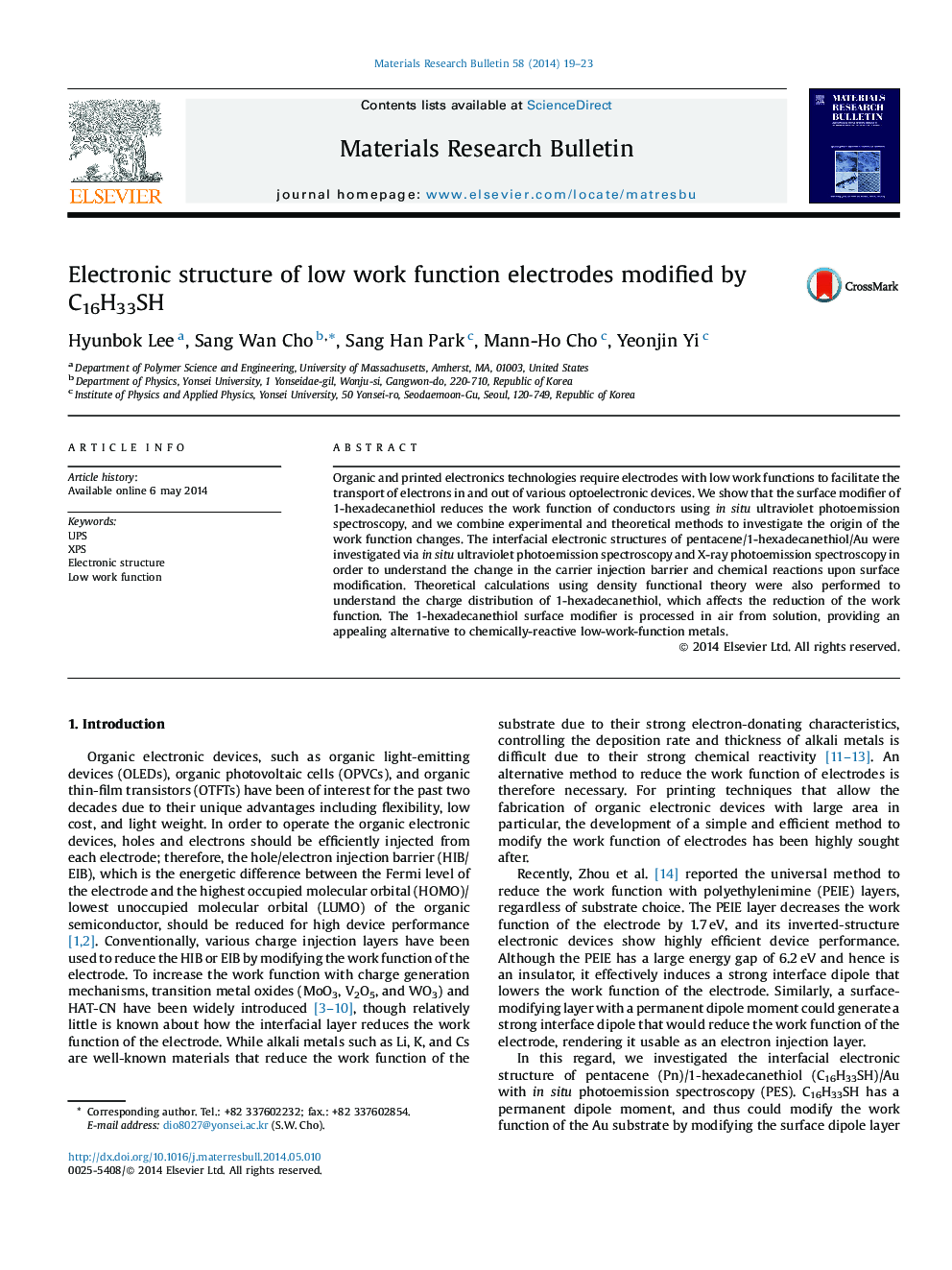| Article ID | Journal | Published Year | Pages | File Type |
|---|---|---|---|---|
| 1488295 | Materials Research Bulletin | 2014 | 5 Pages |
•The electronic structure of pentacene/C16H33SH/Au is investigated.•The work function of Au is significantly decreased with C16H33SH treatment.•The reduced work function is attributed to its permanent dipole moment.
Organic and printed electronics technologies require electrodes with low work functions to facilitate the transport of electrons in and out of various optoelectronic devices. We show that the surface modifier of 1-hexadecanethiol reduces the work function of conductors using in situ ultraviolet photoemission spectroscopy, and we combine experimental and theoretical methods to investigate the origin of the work function changes. The interfacial electronic structures of pentacene/1-hexadecanethiol/Au were investigated via in situ ultraviolet photoemission spectroscopy and X-ray photoemission spectroscopy in order to understand the change in the carrier injection barrier and chemical reactions upon surface modification. Theoretical calculations using density functional theory were also performed to understand the charge distribution of 1-hexadecanethiol, which affects the reduction of the work function. The 1-hexadecanethiol surface modifier is processed in air from solution, providing an appealing alternative to chemically-reactive low-work-function metals.
Graphical abstractFigure optionsDownload full-size imageDownload as PowerPoint slide
